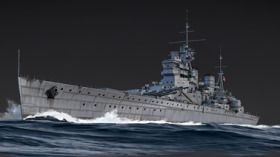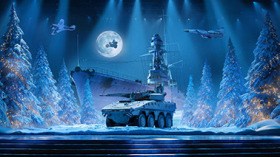
- For PC
- For MAC
- For Linux
- OS: Windows 10 (64 bit)
- Processor: Dual-Core 2.2 GHz
- Memory: 4GB
- Video Card: DirectX 11 level video card: AMD Radeon 77XX / NVIDIA GeForce GTX 660. The minimum supported resolution for the game is 720p.
- Network: Broadband Internet connection
- Hard Drive: 22.1 GB (Minimal client)
- OS: Windows 10/11 (64 bit)
- Processor: Intel Core i5 or Ryzen 5 3600 and better
- Memory: 16 GB and more
- Video Card: DirectX 11 level video card or higher and drivers: Nvidia GeForce 1060 and higher, Radeon RX 570 and higher
- Network: Broadband Internet connection
- Hard Drive: 62.2 GB (Full client)
- OS: Mac OS Big Sur 11.0 or newer
- Processor: Core i5, minimum 2.2GHz (Intel Xeon is not supported)
- Memory: 6 GB
- Video Card: Intel Iris Pro 5200 (Mac), or analog from AMD/Nvidia for Mac. Minimum supported resolution for the game is 720p with Metal support.
- Network: Broadband Internet connection
- Hard Drive: 22.1 GB (Minimal client)
- OS: Mac OS Big Sur 11.0 or newer
- Processor: Core i7 (Intel Xeon is not supported)
- Memory: 8 GB
- Video Card: Radeon Vega II or higher with Metal support.
- Network: Broadband Internet connection
- Hard Drive: 62.2 GB (Full client)
- OS: Most modern 64bit Linux distributions
- Processor: Dual-Core 2.4 GHz
- Memory: 4 GB
- Video Card: NVIDIA 660 with latest proprietary drivers (not older than 6 months) / similar AMD with latest proprietary drivers (not older than 6 months; the minimum supported resolution for the game is 720p) with Vulkan support.
- Network: Broadband Internet connection
- Hard Drive: 22.1 GB (Minimal client)
- OS: Ubuntu 20.04 64bit
- Processor: Intel Core i7
- Memory: 16 GB
- Video Card: NVIDIA 1060 with latest proprietary drivers (not older than 6 months) / similar AMD (Radeon RX 570) with latest proprietary drivers (not older than 6 months) with Vulkan support.
- Network: Broadband Internet connection
- Hard Drive: 62.2 GB (Full client)
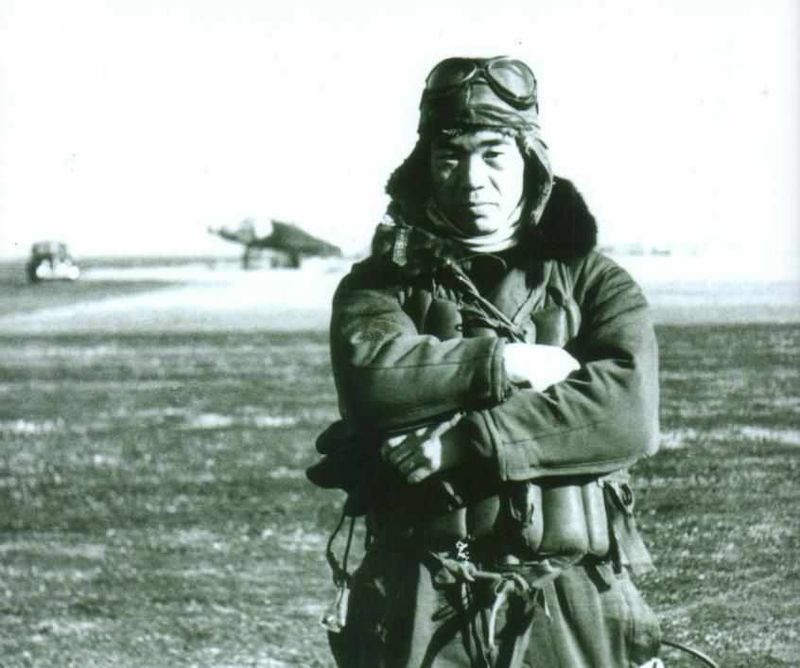 |
| Saburo Sakai during his duty in China |
Saburo Sakai was born August 26th 1916 in the farming village of Nishiyoka in the Saga prefecture on Kyushu island, Japan. Sakai came from a family descended from Samurai, Japan's ancient warrior class. He was taught to live by the code of Bushido, which he defined in his book, ''Samurai!'' published in 1957 by E. P. Dutton, as living so as to always be prepared to die for a worthy cause, whether it be for the lord you’re serving or for your country.
He grew up on a farm with 6 siblings (3 brothers and 3 sisters). His father died when he was 11, and his uncle, who was the Minister of Communications, adopted him and placed him into a Tokyo High School. However, Sakai had bad grades, and no matter how much he studied, he could not catch up. He was kicked out of the school for bad behaviour and grades after his second year, which brought great shame to not only himself and his family, but also to his entire village. With nowhere else to turn to, Sakai enlisted with the Japanese Navy when he was 16 at Sasebo Naval Base.
His early days of training were harder than anything he was faced with before. Aside from the regular physical training and studying that the recruits had to do, they were also subject to intense beatings by the petty officers for any slip that occurred, or for not following orders directly as specified. The beatings sometimes resulted in these young men passing out. However, this toughened them up, and at the 6-month mark none of them dared question any order given, however ridiculous it might have been.
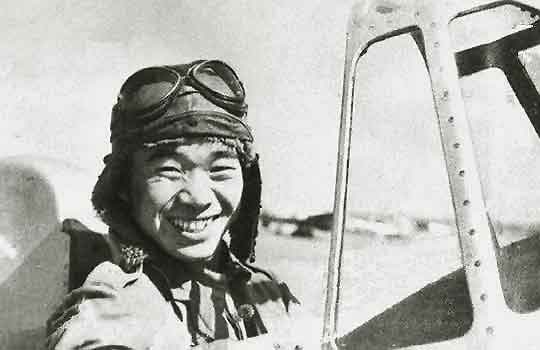 |
| Saburo Sakai in the cockpit of a Mitsubishi A5M |
In early 1937, at the rank of Petty Officer Second Class, he applied and was accepted into a pilot training school. Wanting to fix the dishonour of his past life, he studied hard and achieved the best grades in his class Tsuchiura, earning himself a silver watch, presented to him by Emperor Hirohito himself. The first combat mission he was assigned to was in the Sino-Japanese war in 1938 and 1939, flying a Mitsubishi A5M, in which he got wounded, and managing to shoot down a Soviet-built DB-3 bomber. However, this did not impede his ability to fight. Later he was selected to fly the Mitsubishi A6M2 Zero fighter in combat over China.
Just moments after the attack on Pearl Harbor, on December 8th, Sakai, as a member of the Tainan Kokutai (Air Group), and one of 45 Zeroes sent there, participated in the attacks on Clark Air Base in the Philippines. In his first ever combat against Americans, he shot down a Curtiss P-40, and also strafed two B-17 bombers at an airfield. On that day, the Tainan Kokutai destroyed 4 planes in the air and 35 on the ground.
During the group’s operations in Guadalcanal, Sakai shot down 3 Grumman F4Fs. He started approaching another group of 4 F4Fs, in hopes of doing the same. However, he soon realized that he had made a mistake. The planes were in fact SBD Dauntless bombers, each with a rear gunner. A shot from one of them hit Sakai in the face, damaging his vision in his right eye and leaving him slightly paralyzed.
Sakai resumed flying air combat, but his bad eyesight got him into trouble. On June 24 1944, he approached 15 planes that he thought were Zeros, but were U.S. Navy Grumman F6F Hellcat fighters. In a high-flying chase that has become legendary, Sakai eluded every single attack from 15 Hellcats for over 20 minutes, returning to base untouched.
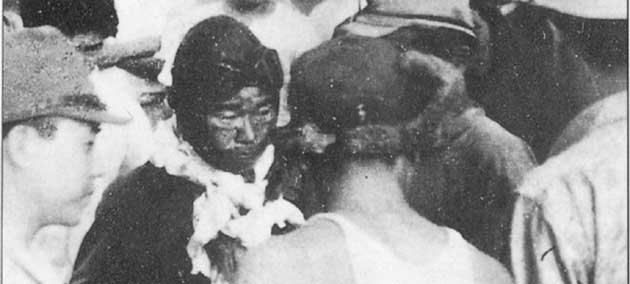 |
|
Although suffering from a .30 cal shot to the head, Saburo Sakai managed to return to base and successfully land his aircraft after 4 1/2 hours of flying, barely concious due to the blood loss. |
There is also the story of his encounter with a civilian DC-3 airplane over the island of Java in the Dutch East Indies. His orders were to shoot down any plane that was in the vicinity of the island. After shooting down an enemy plane, Sakai spotted a large black civilian aircraft coming towards him. Thinking that it might be holding important people, he signaled to the pilot to follow him. After he refused, Sakai came to a wing’s distance of the plane. Inside it, he saw it jam-packed with terrified people, all waving their hands. He also saw a blonde woman with a small daughter, who reminded him of his old high school teacher by the name of Mrs. Martin, who was always good and kind to him. Recalling those past memories, he decided that sparing the lives of these civilians was more honorable than killing them all just because he was ordered to do so.
Saburo Sakai was indeed an ace, downing 64 Allied aircraft, and most of all, never losing a wingman in over 200 missions. He experienced injuries, but always brought his aircraft home. After WWII, Sakai’s writings described the cruel reality of war and combat. Starting from his book "Samurai", he kept writing and lecturing on leadership based on his experience. After the war, he returned home and became a Buddhist monk. From the scorching summer day, the last time he would ever enter his Zero, to the day he died, he claimed to have never killed any living thing, not even a mosquito. He became friends with many American pilots and war veterans, and even with the person who shot him in the face.
Saburo Sakai died on September 22, 2000, aged 84.
Sergej "NuclearFoot" Hrustic


